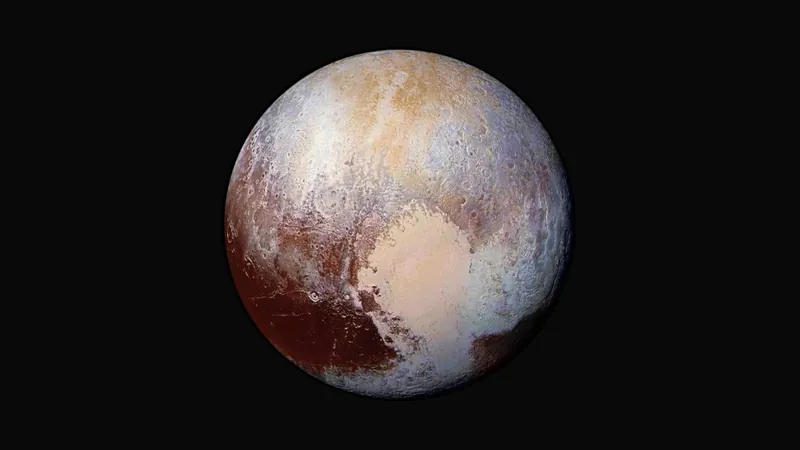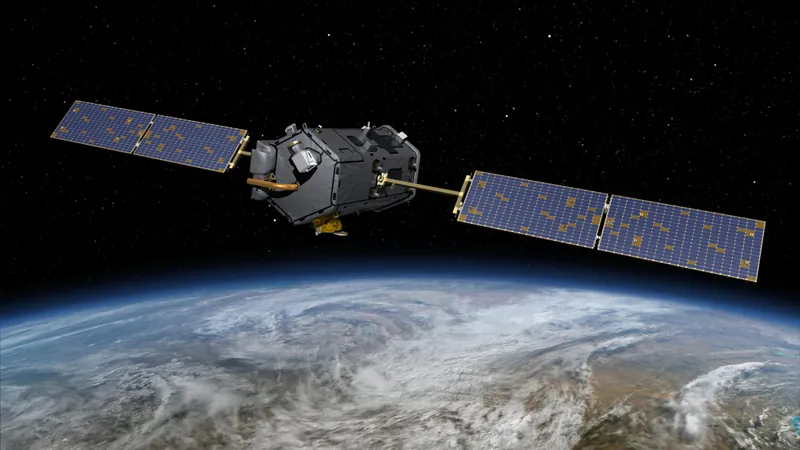
The Heart of Pluto: A Decade Later and Still Waiting for More
2025-07-15
Author: Benjamin
Ten years ago, NASA's New Horizons spacecraft offered a mesmerizing glimpse of Pluto, revealing its intriguing landscape nestled in the far reaches of our Solar System. The data collected sparked a deluge of questions about this distant, dynamic world that have puzzled astronomers since Clyde Tombaugh's remarkable discovery in 1930.
On July 14, 2015, during its historic flyby, New Horizons uncovered astonishing features of Pluto, including its iconic heart-shaped glacier and curious mountain ranges. However, instead of giving us all the answers, the mission opened the door to new mysteries: how did such an active world develop so far from the Sun?
A Long Wait Ahead
As we look to the future, it appears that answering these questions will require a lengthy wait. For the upcoming decades, scientists have only the New Horizons data archive, packed with over 50 gigabits of information, and ground-based telescopes like Hubble and the newer James Webb to continue their Pluto studies.
Unfortunately, the prospect of a follow-up mission to Pluto is dim. While a solid NASA budget could have allowed for another expedition in the next 10 to 20 years, current budget cuts proposed by the Trump administration threaten not just future missions but also operational spacecraft, including New Horizons as it journeys into uncharted territories of the Kuiper Belt.
Budget Cuts and Scientific Morale
The proposed budget cuts have raised alarm bells within NASA and the broader space science community. If enacted, the cuts would not only sink future exploration missions but also curtail funding for vital research and data analysis. Budget priorities seem to be swaying towards lunar and Martian missions, steering away from the further reaches of our Solar System.
Despite the urgent call from the scientific community for a second mission to Pluto, the National Academies’ latest decadal survey has relegated such explorations to a distant dream, with Mars Sample Return and missions toward Uranus and Enceladus taking precedence.
What Lies Beneath Pluto?
New Horizons provided only a fleeting look at half of Pluto, leaving many questions unanswered about this enigmatic dwarf planet. Scientists continue to ponder what lies beneath its icy surface: Is there an ocean? How thick are the ice sheets? Are cryovolcanoes still active? An orbiter mission could provide the answers.
Some researchers are advocating for a conceptual mission named Persephone, named after the mythological wife of Pluto. However, even if proposed, launching such a mission wouldn't be feasible for many years, especially given the complexities of reaching Pluto and entering its orbit.
Propulsion Challenges and Future Missions
One concept for the Persephone mission includes utilizing nuclear electric propulsion, which could significantly reduce travel time to Pluto while providing ample power for scientific instruments. However, such technology remains in its infancy, and funding cuts threaten its development.
The path forward also involves considering innovative launch vehicles like SpaceX's Starship, though detailed studies on its feasibility for a Pluto mission are yet to surface.
A Wait of Generations
Given the hurdles faced in developing a new Pluto mission, it seems we might endure a wait of 50 years or more, reminiscent of the gap between Voyager's flybys of Uranus and Neptune. As scientists prepare for this prolonged hiatus, interest in Pluto and the broader mysteries of our Solar System remains undeterred.
For now, the captivating world of Pluto continues to tease our imaginations, leaving us eager for the day we can explore its hidden depths once again.









 Brasil (PT)
Brasil (PT)
 Canada (EN)
Canada (EN)
 Chile (ES)
Chile (ES)
 Česko (CS)
Česko (CS)
 대한민국 (KO)
대한민국 (KO)
 España (ES)
España (ES)
 France (FR)
France (FR)
 Hong Kong (EN)
Hong Kong (EN)
 Italia (IT)
Italia (IT)
 日本 (JA)
日本 (JA)
 Magyarország (HU)
Magyarország (HU)
 Norge (NO)
Norge (NO)
 Polska (PL)
Polska (PL)
 Schweiz (DE)
Schweiz (DE)
 Singapore (EN)
Singapore (EN)
 Sverige (SV)
Sverige (SV)
 Suomi (FI)
Suomi (FI)
 Türkiye (TR)
Türkiye (TR)
 الإمارات العربية المتحدة (AR)
الإمارات العربية المتحدة (AR)